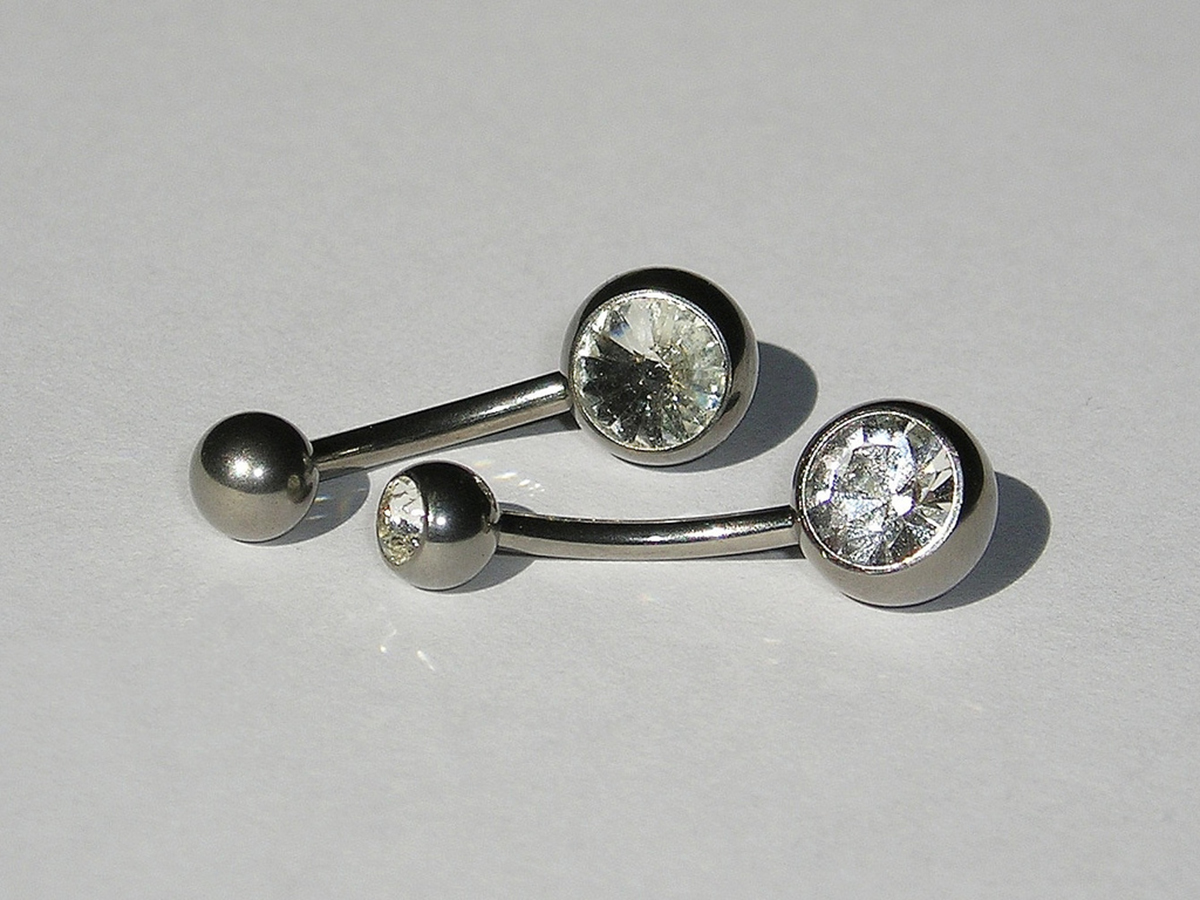Table of Contents
Choosing Your Material
Yes, you can choose the material your first piercing is made of. While your piercing is new and fresh, it's important to choose a material you're not allergic to, and one that won't corrode while it mixes with your bodily fluids.

Surgical stainless steel is one of the best options around, and also what piercers will typically use. Unless you have a rare allergy, you will not need to worry about allergic reactions if you choose a stainless steel piercing. The piercing will not break, and it will always look as good as it does the day you firs get it. Surgical titanium is an alternative that's just as good as stainless steel. Solid gold is another safe option. For those who are allergic to metals, tygon plastic is a wonderful option.
Belly Button Piercing: Aftercare Guidelines
Choosing a reputable piercer is hugely important, but once you leave the shop, it's up to you to look after your new body mod. Your piercer should provide you with written aftercare instructions, but we'll share the correct care procedure here too.
- Use either a sterile saline solution without additives or iodine-free sea salt dissolved in distilled water. Soak your belly button piercing once or more a day, using this solution. You can do this by placing the solution into a clean cup and pressing it onto the area containing your belly button.
- Wash your hands before touching your new belly button piercing — but don't touch it all the time!
- You can soap your belly button piercing while you shower, and remove any yucky stuff that has built up around it gently. Act quickly and use a perfume-free soap.
- Don't use towels to dry your piercing: they are full of germs. Use clean paper towels instead.
- You do not need to rotate your piercing.
While your piercing is healing, make sure it does not come into contact with harsh soaps, perfumes, non-approved solutions (like alcohol-based ones), or saliva. Don't wear clothes that cause friction, and avoid putting your piercing under stress. Don't touch the piercing constantly, as this will irritate the area and possibly lead to infection.
The APP advises people to eat healthily, get enough sleep, avoid stress, and avoid use of drugs and alcohol to promote faster healing. These are all wonderful tips for a general healthy life under all circumstances, but they make sense after you get your belly button pierced too.
See Also: Health And Safety In Tattoo Studios: What You Need To Know
If you follow all these common-sense tips, you will soon end up with a fully healed and beautiful belly button piercing that you can enjoy for many years to come. Do remember that some people find their piercing closes up quickly even after they have had it for years, so replace your jewelry immediately after taking it out. Avoiding risky materials, particularly nickel, remains sound advise even after your piercing has healed. Your piercer will be able to advise you where to buy good jewelry.
- Photo courtesy of Dawn Ashley via Flickr: www.flickr.com/photos/dawnashley/3782367358
- Photo courtesy of Blumenbiene via Flickr: www.flickr.com/photos/blumenbiene/4441214188


Your thoughts on this